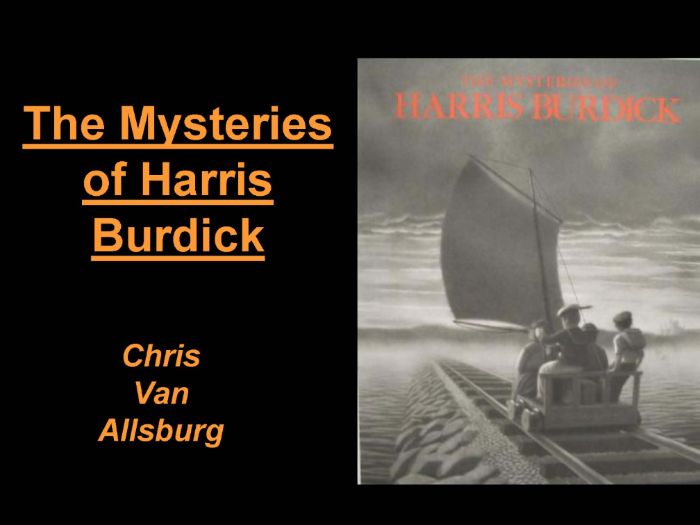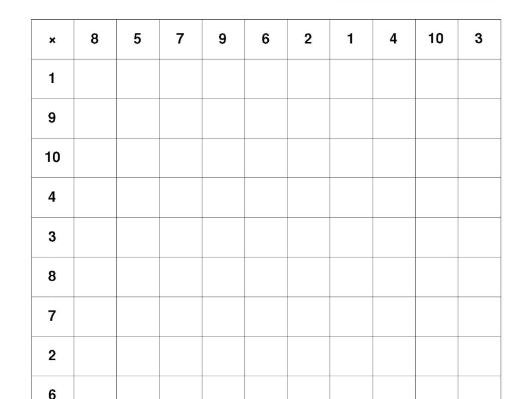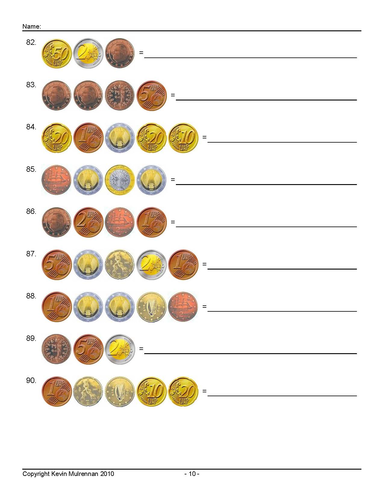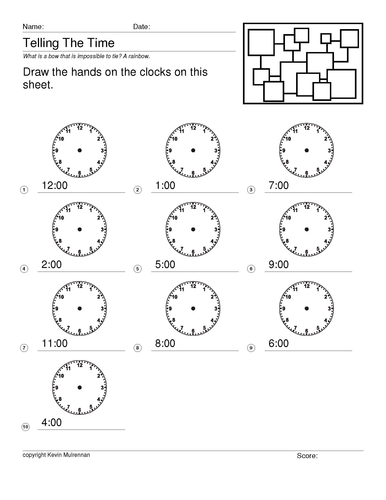351Uploads
96k+Views
27k+Downloads

Science Healthy Eating 5 Powerpoints Planning Worksheets Year 5 and 6
A great unit on healthy eating.
Lovely series of 5 powerpoints plus bits and bobs.
sample planning :
Keeping healthy
In this unit we will learn:
· there are many aspects to keeping healthy
· about the heart
· how heartbeat is affected by exercise
· how early ideas about diet & health were tested
Enquiry Skill Focus:
· repeating measurements
· representing data in bar charts and graphs and interpreting these
· using results to draw conclusions
Begin by discussing ‘science’ with the class. What do they think of the subject? Can they name any important scientific skills?
Introduce topic and ask children what they think the word ‘health’ means. Talk with talk partners. Children to find definition in dictionary and write class definition on strips of paper for display wall. Lead into a class discussion on keeping healthy; can the children predict what sorts of topics we might we might be covering? Can the HA children predict what SC1 investigations we might be carrying out? Introduce children to the resources which will be available to help them during this topic; the working wall plus table mats. Explain that each science topic will have a topic page and a glossary. This glossary gives the definitions of important vocabulary which they will come across during the unit.
Activity One
Children to feed back and complete class prior knowledge map. (Even if facts are not correct, add them on and clear up misconceptions throughout unit.) Children could add to their own map in a different colour any facts they have not got, which their peers suggest.

Christmas Year 6 Planning With Emphasis on Comparison of Gospels
Great planning.
Powerpoints and worksheets plus a week plan.
sample planning :
Ask children to think about their literacy lessons – TTYP and name the important details that are needed in telling a story
(e.g. time, place, characters and events).
Ask children to the recall names of the four main Gospels.
Do they all tell the same story? (Essentially yes but lead children towards idea that they are different versions of the same story).
Use analogy of an incident occurring on the playground – would each child tell the same incident in the same way? No they would tell their version of the same event – some details and word choices would differ.
Talk about today’s WALT and explain that we are going to be looking at some different Gospel accounts of the birth of Jesus Christ. Explain to ch that, in order to achieve their WALT, they will need to be comparing and contrasting everything which they read.
Explain briefly that three out of the four Gospels deal with the birth or Christ; there are many similarities and many differences in the way in which the Gospels record and explain the event.
For today’s lesson we are going to focus on Matthew’s Gospel and Luke’s Gospel.
Discuss possible reasons for the differences in the two accounts. They are coming from two different people; points of view; written at different times but the basic story is the same.
Briefly recap last lesson. Which two Gospels did we look at? Which story were we reading? Did both Gospels tell the story in exactly the same way?
Refer to the list which was made in the plenary last lesson - which other characters were involved in the Christmas story?
Re-read the story of the birth of Jesus in Matthew’s Gospel. Continue to read until Chapter 2 verse 12.
Why did the message of Jesus’ birth first come to shepherds rather than King
Herod?
Why did Herod want to get rid of Jesus?
What words would you use to describe the threat that this baby was to Herod?
What do you think led men to come from the east by the light of a star to find this child?
Herod assumed the King of the Jews sought by the wise men was a conventional king and thus a rival to his throne.
TTYP – what were the names of the three gifts which the wise men brought to the baby Jesus?
Briefly recap the unit so far. Who are the main characters in the Christmas story? Which two Gospel accounts of the birth of Christ have we looked at? What are the similarities and differences between them?
Share the WALT and explain that this lesson will focus on the birth of Christ according to St John’s Gospel.
Explain that in St. John’s Gospel there is no account of the birth of Christ, but there is a poem at the beginning that speaks about him.
Use PPT to explain a prologue.

Morning Work Sentence Uplevelling Work Literacy Year 5 Pie Corbett
Some easy worksheets to get pupils uplevelling.
Good exercise to have on the desk when they arrive in class.
Plus some nice VCOP and Pie Corbett stuff.
Improving Sentences Checklist:
improve the verb
add an adjective (WOW word)
extend with a connective
start with an ly, ed or ing word
include a simile or a metaphor
add an adverbial
Sentence up Levelling
There was a volcano There were sparks flying
Molten lava streamed down the sides

Times Tables Resource Suitable for KS2 Maths Multiplication Worksheets
100 sheets I’ve designed for times tables.
There are a variety of sheets, getting progressively more difficult.
Some are 10 by 10, some 12 by 12, some in order, some jumbled up.
The pupils have to fill in the blanks on the grid. Simple but effective.

Euro Coins European Worksheets 500 Questions Mathematics Counting KS1 KS2
500 questions on counting up Euro coins.
5 worksheets with 100 questions each.
There are little pictures of the coins and the pupils have to add them up and write the answers on the sheet.

Geography Lesson KS2 Mountains Avalanches Planning and worksheets
A nice little set of handouts and planning.
Suitable for about years 4 to 6.
Couple of nice powerpoints and worksheets.
Good for map work.
Find the countries.

Ash Wednesday Lent Teaching Resources Planning Powerpoints Worksheets Religion
I taught in Catholic schools for years.
Now happily retired, I have assembled all my planning for Lent.
Packed full of stuff. Powerpoints, planning, worksheets, masses etc etc.
This will really make your life easy.
Over 300 mb of stuff. Nearly 500 files.
Sample planning :
PRAYER Start with prayer, light candle, music – look at and reflect on the temptations of Jesus.
INTRODUCTION
Using the following:
http://www.biblegateway.com/passage/?search=mt 4: 1 - 11&version=ERV
Read the text of the temptations of Jesus. Why was Jesus in the desert in the first place? What had just happened to him before this episode in his life?
Recall the three things the devil asked Jesus to do.
What was Jesus’ response on each occasion?
Why do you think these three things were chosen to tempt Jesus?
Jesus was as human as you and me, in all but sin, and yet at the same time he was Gods’ Son.
Do you really think it was difficult for him to say no to the devil? Why do you think it might have been difficult?
Look at the text again. Are there any indicators, which show that this was easy?
MAIN ACTIVITY
Imagine you are Jesus. Write a diary entry about the temptations and how it affected you.
LA to use writing frame
MA to work with partners and write a diary entry about the temptations and how it affected them.
HA to work independently and write a diary entry about the temptations and how it affected them. They will need to also discuss the different responses given by Christ.
Assistant to support LA group. TA n/a
PLENARY AND PRAYER
Reflect on the temptations of Jesus in the desert.
End with prayer – reflect on Jesus’ response to the devil.
PRAYER Start with prayer, light candle, music – look at and reflect on
the temptations of Jesus.
INTRODUCTION
Using the following:
http://www.biblegateway.com/passage/?search=Lk 4: 1- 14&version=ERV
read the text of the temptations of Jesus.
In groups, children to brainstorm the word “temptation” and create a mind map of associated words. What is it like when you are tempted to do something you shouldn’t?
How can we tell the difference between doing something that is right or wrong?
How can we resist the things that are wrong?
MAIN ACTIVITY
Children to write of a time when they resisted temptation or when somebody gave into temptation. Explore the consequences of the different actions.
LA to use writing frame
MA to work with partners and write of a time when they resisted temptation
HA to work independently and write of a time when they resisted temptation and when they gave into temptation. They will need to explore the consequences of the different actions.
Mr Mayor to support LA group
TA n/a
PLENARY AND PRAYER
Reflect on the difference between doing something that is right and something wrong.
End with prayer – reflect on how we can resist the things that are wrong.

Back to School Autumn PlanningThere's a Boy in the Girls' Bathroom Louis Sachar
Some great planning on this excellent book.
Worked a treat in year 4 but could be adapted up or down.
Sample planning :
Reading and Analysis
Mon
Revise comma splicing work. Choose three example sentences and punctuation to add. WALT: To be able to explore themes and issues in a text,
To be able to write in role to a character in the text.
Read extract showing Jeff changing. Note reactions at each point. (Reveal)
How is Jeff feeling? How do we know? How does Bradley feel now? Write an e-mail to Jeff using Extranet site. Advise him what to do based on events in chapter. Informal. Consider purpose. Share received e-mails. How should Jeff respond.
AF6 Wr Viewpoint of character RED
CT to support sentences and encourage completion.
Tues Consider e-mails and identify errors to correct. Check grammar and punctuation. Who is the audience? APP AF3 reading
WALT make deductions from a text.
Read ch 23-25.
WALT: interpret evidence to make deductions. All draw outline of Bradley showing his bad outside and his good inside. Write diary entry on behalf of Bradley showing feelings about Carla. R AF3 make deductions. Children are to show and explain there own choices and justify decisions. GREEN
Support sentence skills and grammar.
Wed
Recap word groups with examples of each in class. E.g. adverb and adjective. Improve using a thesaurus. Read next chapter to include list Bradley makes. What does it show us about him? Be imaginative. AF3 R How is it helping him to think? Why does he repeat some things? Create your own list in the style of Bradley. Check spellings and compare with a friend. What does it show about you?
WALT: Show empathy for a character.
Read and interpret lists as if you were Carla. What would she say? ORANGE
Support use of dictionary and thesaurus for ideas.
Thurs
Grammar skills. Choose correct words to complete gap. Adjectives. Shared read next chapter with Bradley changing. How does he feel? Freeze frame alongside story telling. How does each character feel? Use outline of Bradley. Show goodness inside and badness outside. Use quotes and examples from the text. WALT: select evidence to support a view VERY WELL DONE! Share thought with a partner and with the class. Yellow
Share quotes. What do they show about his character?
Fri
List prepositions. Sort into order then create a paragraph. Teacher to model. Big Writing: SATs test example. Through the door. Apply skills of descriptions using prepositions. Planning time using boxing for paragraphs. AF1 AF7 Wr
WALT: write a description of a scary place. 3 Stars and a wish. Response partners. Blue: Extend ambitious vocabulary.
Tell me what you think/felt about…
What came into your mind when you read…
Have you come across anything like this before….? Tell me more…
Do you agree…?
Bundle

Decoding Bundle 200 Worksheets Verbal Reasoning
A bundle of worksheets.
200 worksheets on decoding,
Plus some great ones on Pythagoras.
I have designed 200 worksheets on decoding numbers for the 11+ non verbal reasoning questions. There are 200 worksheets provided on a cd. Decoding is an important aspect of the 11+ exams. Ideal for parents, pupils and tutors. Answer sheets provided. The Decoding worksheet helps to reinforce spelling and problem solving skills for students. The letters of each word are replaced with other letters or numbers based on a pattern.

Simplifying Fractions 100 Worksheets with Answers Maths Mathematics KS2
100 worksheets on simplifying fractions.
Answer sheets provided.
A good time filler or homework.
Bundle

Year 4 Planning Complete Year's Planning Numeracy Literacy KS2 & Aesop Cloze Worksheets Bundle
Great mega bundle.
A complete year’s planning.
Plus great Aesop cloze worksheets.
Incredible value.
Please look at my shop for individual details.
Below is one as an example:
Planning for the Autumn term for year 4.
You get 160 mb of material so good value imo.
I taught mainly in Catholic schools so has a Catholic bent. But as we live in a multicultural society, this should be no problem.
You get planning for:
creative curriculum
Literacy
Numeracy
P.E. (some)
Science (some)
R.E. (Advent etc)
Loads of great lessons to ease your Sunday afternoons. Just cut and paste into your school template.

Year 5 Autumn Term Numeracy Mathematics Planning & Times Table Worksheets
Reclaim your Sundays!
Year 5 Autumn planning for Mathematics.
Plus great worksheets on Times Tables.
This is a different set of Maths plans from all my others that are on TES
Adapt them for your school. Cut ans paste and adapt to your needs.
Topics include
Handling data and measures
Securing number facts, understanding shape
Addition and Subtraction Methods.
and many more
Plus great worksheets that help pupils with their Times Tables.

Year 6 Literacy Revision Autobiography Explanation Texts The Shirt Machine
Nice Summer planning for year 6.
Focuses on the Shirt Machine.
Plenty of planning and powerpoints etc.

Year 5 Complete Year's Religious Studies R.E. Planning
For all year 5 complete planning all terms.
Easily adaptable up or down, so will save you hours.
Catholic in flavour but other religions included.
Contains powerpoints, planning, worksheets, info etc.
Why not look at the bundles. Incredible value and it’ll save your precious Sundays.
Ideal if you have been chosen to deliver R.E.
Note : zip file contains loads more files than the list you see.
sample planning

Year 6 Complete Year's Religious Studies R.E. Planning
For year 6 complete planning all terms.
Easily adaptable up or down, so will save you hours.
Catholic in flavour but other religions included.
Contains powerpoints, planning, worksheets, info etc.
Why not look at the bundles. Incredible value and it’ll save your precious Sundays.
Ideal if you have been chosen to deliver R.E.
sample planning :
Bundle

Years 1 to 6 Religious Studies Complete Year's Planning Great Value Bundle
Superb value.
Great if you have to deliver R.E.
Loads of worksheets, planning, Powerpoints.

Back to School Autumn Planning Year 5 Literacy Myths
Loads of great planning :
Genre: Traditional stories, fables, myths, legends.
Focus Texts: Robin Hood (Legend), Hercules (Myth) and Pandora’s Box (Myth).
Objectives
Primary Framework 7. Understanding and interpreting texts
Compare different types of narrative and information texts and identify how they are structured
Explore how writers use language for comic & dramatic effects
8. Engaging with and responding to texts
Compare the usefulness of techniques such as visualisation, prediction and empathy in exploring the meaning of texts
11. Sentence structure and punctuation
Punctuate sentences accurately, including using speech marks and apostrophe
Learning/Writing outcome for unit: Children can write a new version of a legend, identifying their audience and adapting their writing to suit this audience.
Children can reflect on their own performances.
Children can reflect critically on their own writing and edit and improve it.
Introduce the new unit and look at the writing outcome displayed on the working wall – explain that we have three weeks to achieve this.
Allow children two minutes to TTYP and talk about the new unit – do they have any ideas about myth, legends or fables?
Introduce the LO for today.
Work through the PowerPoint on the features of a myth.
Activity One
Come back together and create a ‘post it’ note checklist for the working wall, to include:
A myth is about gods and goddesses
It is set in ancient times
It features danger/revenge
It includes use of magical powers
It uses powerful imagery
Characters are heroes
Explains a strange/important happening
It features strange, frightening creatures
Read the following version of ‘Pandora’s Box’ and compare & contrast:
http://myths.e2bn.org/mythsandlegends/story562-pandoras-box.html
Activity Two
Recap on what we learned yesterday. What did you think of the texts we looked at?
Remind the children of ‘Pandora’s Box’.
Who is it aimed at? Why? What is the story about? Children to summarise the main points in pairs.
Discuss the features of a myth.
Activity One
Come back together and discuss the activity.
Explain that we are now going to identify the features of a fable:
http://www.aesops-fables.org.uk/aesop-fable-the-hare-and-the-tortoise.htm
Introduce and discuss ‘Aesop’s fables’
A fable is a complete story
Clever/amusing
Quite short
Uses animals as main characters
Treats animals as people
Includes a moral at the end
Create a checklist for the working wall.

Euro Coins Worksheets KS1 KS2 Mathematics Freebie
A worksheet that pupils have to fill in. They have to add up the coins.
If you like it, please visit my shop that has an enhanced similar product.

Freebie Telling the Time KS1 KS2 Mathematics
A sheet with answers where pupils have to draw the hands to show the time on a small clock.
If you like this, please visit my shop where there is a more sophisticated product.

Freebie Fractions KS1 KS2 Mathematics Simplifying Mixed Fractions etc
An example freebie of my self-designed fractions sheets.
If you like this one, please take a look at my shop.
You could but half a million questions on fractions.
Or maybe ones on simplifying fractions, Mixed fractions etc.
Please look for the bundles if you are looking for great value.























